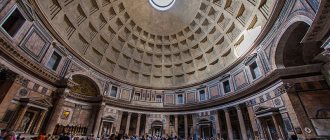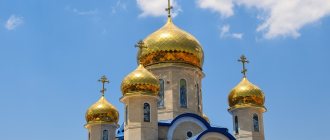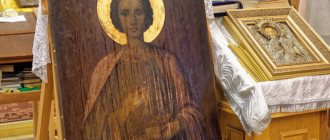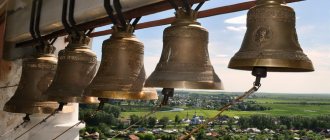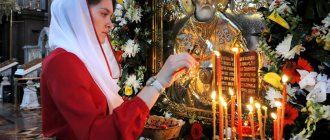Protection and support: punishment for encroachment on the weak
Perhaps most consistent with modern ideas are episodes from medieval sources where saints punish people for atrocities against those who are much weaker than the criminal. Descriptions of these cases were frightening even centuries later. For example, in the 19th century, the publisher of the life of Herald of Aurillac (Aurillac) in the Patrologia Latina series did not dare to include the following episode in the printed text - the fragment was published much later.
So, a woman from Limoges visited the tomb of St. Gerald. On the way back, she was raped by a certain horseman. Although any attack on pilgrims was condemned, it was not stopped either by the fact that she was returning from a holy place, or by the very name of Herald. Soon - apparently by the will of the saint - the criminal’s genitals decomposed and fell off. Even after this, he did not repent of what he had done, although the compiler of his life clearly expected this: for a medieval person, such a sudden illness was an understandable sign requiring repentance. However, the sinner did not admit his guilt, so a few days later he drowned in the river, which means he could not repent of his sins even before death - such a fate was feared by any Christian of that era.
This type of punishment from above is quite understandable today. But in this life there are many other examples of frighteningly, from our point of view, cruel punishments, and for much lesser crimes. By the will of the saint, norm-breakers are struck by sudden illnesses, their hands dry up, and the skin peels off their bodies in an instant. Paradoxically, all these facts do not make Herald cruel, from the point of view of the compilers of his life.
On the contrary, they constantly emphasize how gentle a person he was. The saint came from a noble family and could become a warrior, like the generations of his ancestors. Instead, he abandoned secular life and marriage and founded a monastery on his lands, where he later rested. The life mentions that Herald's associates called him timid, shy, almost effeminate. Hagiographers also report that during his entire life in the world he did not inflict a single wound - just as he himself was not wounded, although he participated in battles.
To some extent, these descriptions can be considered a commonplace, characteristic of lives - the saint must be portrayed as kind and meek, not accepting violence. However, these characteristics also partially revealed a specific medieval view of harsh punishments. Herald scholar Matthew Kuefler writes:
“...their cruelty was so built into the structure of the world and was such a common feature of human life that even saints could go on a rampage.”
How domes are made
A dome is a very “useful” structure that is highly valued in architecture. The use of this structure allows you to cover large spaces with minimal use of additional supports. A modern church dome typically consists of a metal frame, fiberglass shell, and roof cladding.
Today, only the name remains of most golden domes. Due to its high cost and fragility, natural gold is used less and less. It was replaced by titanium nitride, which is used to coat stainless steel plates. This material is not much inferior to gold in beauty, but is superior in reliability and ease of processing. Titanium nitride-coated panels are attached to the dome support, after which it rises to the top.
There is no doubt that dome building is a unique craft. It combines the genius of architectural thought and the depth of biblical implications.
Among strangers: the cruelty of saints towards Gentiles
Another traditional type of “strike of a saint” is associated with the defense of the interests of Christianity from those of other faiths. Such episodes are present, for example, in the lives of saints who converted other nations to their faith.
Thus, Leonty of Rostov managed to bring the settlement of pagan Merians to Christianity. Arriving in foreign lands, he decided that it was useless to exhort adults whose views had already been formed, and turned exclusively to young pagans. The indignant Merians came to Leonty and his companions, “the Ovi with weapons, and the Druzians with drekoli,” planning, if not to kill the missionary, then at least to drive him out of the city.
In response, the future saint organized a religious procession, and at the sight of him, some of the Gentiles fell dead, and the rest instantly became blind. However, Leonty immediately revived the dead and restored sight to the blind - amazed by his miracles, the Merians voluntarily were baptized.
Not all Christian missionaries were as lucky as Leontius (however, some rare versions of his life report that he was later killed by pagans). More often than not, clerics traveling to foreign lands became victims of local residents who did not want to renounce their faith. The images of saints who were able to lay a crowd of foreigners dead and then revive them showed both the strength of the Christian faith and the almost unbearable difficulties that awaited those who went to distant lands on a spiritual mission.
Origin story
Tattooing began to develop its history at the beginning of the twentieth century. Then many people were sent to the Solovetsky Islands as prisoners. The bulk of them were those in whom the Bolsheviks saw a threat. These included church ministers who did not want to follow the lead of the new government. It was here, in places of detention, that priests, together with some prisoners, formed a movement. It was designed to fight atheism.
The authorities, in turn, banned the wearing of crosses and other church paraphernalia. It was then that the prisoners decided to tattoo the top of a cathedral or church on their bodies.
For sleeping and drunkenness: punishment for disrespect
Another type of situation where saints could show a harsh disposition was when a person treated them with disrespect. Then the saints took rather harsh measures to point out the mistake to the insolent people, and at the same time to those around them. The Lives do not skimp on terrible details in order to impress the reader and instill in him awe of the image of the saint.
Studying the sources, one can notice how broadly their compilers understood disrespect for saints. For example, we find a characteristic episode in the same life of Leonty of Rostov: these events occurred many years after his death, when Leonty had already been canonized. Once on the day of his memory, a miracle happened - at night the saint rose from the tomb, the church where he rested was filled with fragrance, and angelic singing sounded in it. By morning, the candle at the tomb, lit by the angels, continued to burn. After the service, one of the church ministers wanted to extinguish it and was immediately punished: he became deaf and numb, his arms and legs stopped moving. The cleric recovered only after he repented of all his sins.
However, the saints did not always send illness for disrespect; sometimes it was enough to ignore the person’s requests. This was the fate that awaited the lame boy who visited the tomb of St. Thomas Becket in the hope of being healed. To turn to the saint, the young man had to lie down on the slab covering the tomb - this was the traditional method of healing at the saint’s grave. Alas, lying on the stove, the tired boy soon fell asleep. Thomas Becket appeared to him in a dream, cursed the sick man for his insolence, and then declared that he refused to grant him health.
The saints punished Christians not only for disrespect for them personally, but also for violating the rules established by the church. For example, the life of Martin of Tours tells about a woman who, contrary to the ban, worked on Sunday. Her hand became numb, and her fingers did not leave her palm until the offender came to church and vowed never to work on the holy day again.
Believers could also suffer for their careless attitude towards church holidays. Such a case is described in the Volokolamsk Patericon, a collection of stories about the servants of the Joseph-Volokolamsk Assumption Monastery. One day a company of lay neighbors gathered to properly celebrate the day of the apostles Peter and Paul. The friends brewed mead, and one of them came up with the idea to start celebrating even before the church service. Having drunk quite a bit, he saw a man with a black beard and a noticeable bald spot, “with a terrible look.” The stranger hit the mead maker on the cheek so hard that five of his teeth fell out and the drunkard “lay like dead” for a long time, almost completely paralyzed.
Having barely come to his senses, he told his loved ones about what had happened, and they, based on the description of the terrible man, guessed that it was the Apostle Paul himself - he is usually depicted as bearded and almost bald. The unfortunate drunkard never recovered, and his relatives took him to a monastery, where he died a year later.
Where do you get a tattoo?
Most often, tattoos with domes are applied to the chest or back area; this is where you can place the largest possible design with all the details. It is also believed that the chest area is chosen by prisoners because of its proximity to the heart; by this the person emphasizes that he has repented and taken the righteous path.
It is extremely rare that a design is applied to the wrist and this indicates the protest of the prisoner; such a church is complemented with shackles.
If the chest and back area is completely stuffed, the cathedral is stuffed on the legs: thighs or lower legs. This position does not carry any hidden meaning.
To a foreign monastery: saints in the struggle for land and property
Another area that the saints did their best to protect was the property of the church, and in particular the monasteries. A striking example is “The Tale of the Life of Mikhail Klopsky,” compiled in the second half of the 15th century on the basis of earlier legends. Mikhail, a relative of Dmitry Donskoy, took upon himself the feat of foolishness, renounced his high position and became a monk of a monastery near Novgorod. Even during his lifetime, he had the ability to cause a variety of ailments in his opponents, and the reason for this was mainly economic conflicts.
It happened like this: having learned about the offense, he “predicted” a certain misfortune for the rule-breaker - and it was immediately brought to life. Most often, Mikhail's opponents were overcome by paralysis. This happened with the Novgorod mayor Grigory Kirillovich, who forbade the monks to fish in the nearest river, since it flowed through his lands. He threatened to break the arms and legs of those who did not obey, but, according to Mikhail, the limbs were taken from Gregory himself. The mayor’s health returned only a year later, when Mikhail allowed him to serve in the Klopsky monastery. In addition, the holy fool was subject to heart disease, dumbness, and memory loss.
Judging by the text of the Tale, the severity of the punishment did not depend on the scale of the crime. The only thing that unites all the victims is that they tried to encroach on the property of the Klop Monastery and the church as a whole. The social status of the attackers did not matter either: simple robbers who entered the monastery with weapons, the priest-thief, the Novgorod boyars who laid claim to church lands, and even the Novgorod archbishop who imposed a “tax” on the monks, that is, wanted to receive money from them.
Historian Alexander Medved notes:
“A modern reader of the life may get the feeling that Mikhail Klopsky did not always act on behalf of God - too often he used his gift of suggestion when resolving rather ordinary, as they would say today, disputes between “economic entities.”
Nevertheless, the compiler of the life clearly believed that the highest justice was on the side of Michael. As soon as the mayor has barely come to his senses, the future saint says: “God will punish the one who starts the army!” - and the scribe clearly agrees with him.
There are similar episodes in Western European lives. For example, the already mentioned Herald of Avrilak, who also came from an influential family, had to defend the monastery from his own nephew. He, together with his people, decided to rob the monastery located on his uncle’s lands. Saint Gerald appeared to the wicked man in a dream, hit him on the head and threatened him with immediate death if he did not leave the monks alone. Later, several more people encroached on the monastery property, and they all died under terrible circumstances: say, the skin of a boy who stole an altar cover from a church was completely peeled off.
Matthew Kuefler, who studied the life of the Herald, believes that there is something more behind specific property disputes, even ordinary ones. He writes that these episodes reflect the turbulent situation that surrounded the monasteries in the Middle Ages. Their lands and property were the object of constant “hunting” both from the nobility and from commoner robbers. It is not surprising that the monks had to defend themselves. The strength of earthly patrons was not always enough, and the reputation of a merciless saint, ready to stand up for his monastery, came to the rescue.
Variety of dome shapes
The first dome structures appeared in ancient times, even before the advent of Christianity. These were the so-called belt domes, formed by a stepped vault. With this method of laying, each new layer protrudes above the previous one. A classic example is the ancient Treasury of Atreus at Mycenae.
Today there are several main types of domes known:
- Onion domes. They are distinguished by a convex shape, reminiscent of an onion, with a pointed apex. It is with these heads that most Orthodox churches are crowned, for example, St. Basil's Cathedral on Red Square in Moscow. Onion domes are also found in India and some Middle Eastern countries.
- Helmet-shaped domes. They are named so because they resemble the shape of an ancient Russian helmet. The width of such domes is no greater than their base. They were brought to Russian lands from the cultural and religious architecture of the Byzantine Empire and over time began to be replaced by bulbous ones. Today, helmet-shaped heads can be seen at the Assumption Cathedral in Moscow.
- Spherical domes - also comes from Byzantium. Unlike bulbous and helmet-shaped heads, the top of the spherical ones is not extended very upward. The single dome of the Church of the Dormition of the Virgin Mary in Kyiv has this shape.
- Polygonal domes – formed by several edges. Unlike other chapters with smooth transitions, polygonal domes have corners. The most famous representative with a dome structure of this form is the Cathedral of Santa Maria del Fiore in Florence.
- Saucer dome - the lowest of the domes, reminiscent of a spherical dome in a stripped down form. It is most characteristic of mosques in India, Iran, and Pakistan; it was used in ancient times in the construction of some Byzantine temples.
As you can see, the shapes of the domes are very diverse. This is due to different stages of development of architecture and the exchange of experience between cultures of different countries. In addition to the variety of shapes, domes have other differences.
True believers will certainly be interested in an article describing the Old Testament.
